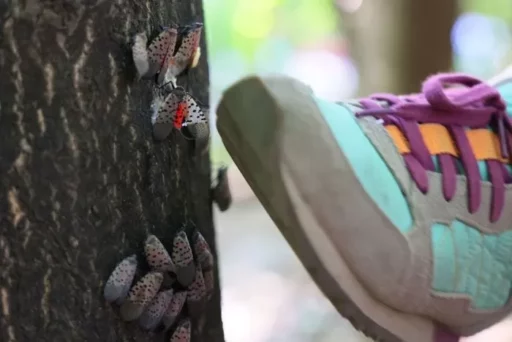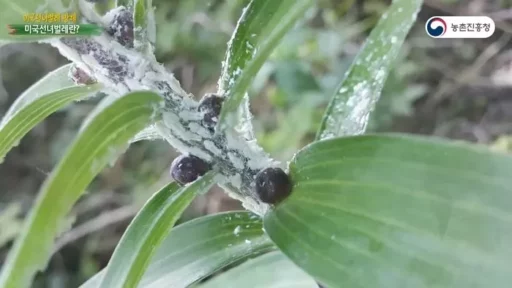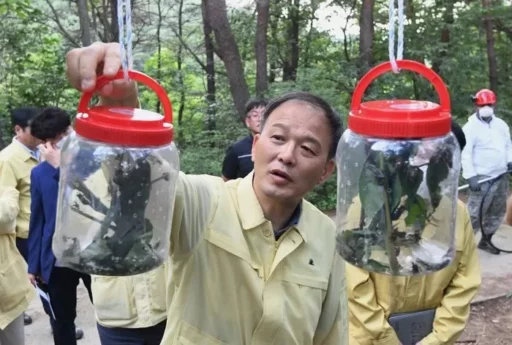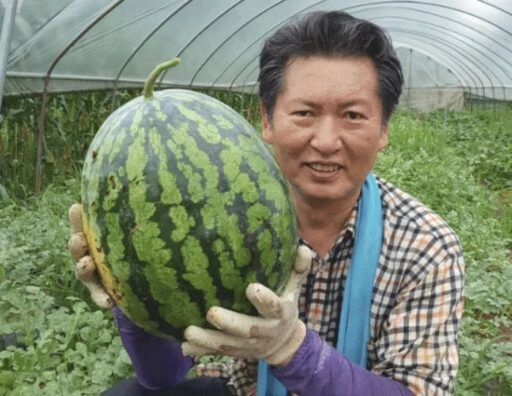Foreign pests passing the baton in Korea… The golden time for pest control is 'now'
From mid-July, the activity of lovebugs (Plecoptera) is expected to decrease, raising concerns that other foreign pests may fill that void.
Every year around this time, invasive species such as the rose-breasted cockroach, the brown planthopper, and the spotted lanternfly, which are already designated as ecosystem-disrupting pests, inflict damage on crops and forests.
The so-called "Chinese cicada," officially known as the rose-breasted cockroach, has entered Korea from parts of Asia, including southern China and Vietnam. Adults measure 2.5 to 2.8 cm in body length, have gray forewings with black spots, while the hindwings are distinctively red, white, and black.

The rose-breasted cockroach feeds on the sap of crops such as grapes, apples, and pears, excreting a sticky sweet substance known as honeydew. When this honeydew comes into contact with leaves and fruits, it triggers a black mold known as sooty mold, which reduces both marketability and yield.
Moreover, the rose-breasted cockroach has a high reproductive capacity and few natural enemies, allowing it to spread rapidly. It was first discovered in Korea in 2004 and designated as an ecosystem-disrupting species in 2006.
The brown planthopper, originating from East Asia, including China, Taiwan, and Japan, was first confirmed in Andong, North Gyeongsang Province, in 1998. It is characterized by a body length of 1.2 to 1.7 cm, a brownish body, brown wings, and a marble-patterned back. It causes damage to apple and pear farms and is classified as a pest of agricultural disaster levels in the United States and Europe.
‘Spotted lanternfly’ causing skin irritation… Wear long sleeves

The spotted lanternfly originates from North America and was first spotted in Korea in 2009. The adult insect measures 7 to 8 mm and is covered with a grayish-white or blueish-gray powder, secreting a white waxy substance that gives it the appearance of a dust ball.
Like the rose-breasted cockroach, the spotted lanternfly leaves behind honeydew on crops such as grapes and persimmons, resulting in sooty mold. Adults are most active from August to October, making focused pest control during this period crucial.
Thus, the mid-July period when lovebug activity decreases is an opportune moment to prepare for the control of rapidly spreading foreign pests.

Some foreign pests can irritate not just crops but also human skin, necessitating caution.
In particular, the spotted lanternfly can cause symptoms such as itching, rashes, and allergic dermatitis due to the waxy substance, fine hairs, and honeydew present on the skin.
If you notice that a bug has stuck to you or if honeydew has come into contact with your skin after going outside, it should be washed off immediately. If symptoms worsen, a visit to a medical professional is necessary.
Prevention of such damage can be aided by wearing long sleeves, checking screens, and minimizing outdoor lighting at night.

Image sources: Rose-breasted cockroach adult / gettyimageskorea, Spotted lanternfly / youtube ‘Rural Development Administration Nongsa TV,’ July 2020, Park Jong-ho, Secretary-General of the Asia Forest Cooperation Organization (then Minister of the Korea Forest Service), inspecting the pest control scene for fall webworms in Wonju, Gangwon Province. / News1


